BECK APERTOMETER SLIDE
By R & J BECK
c. 1924-53
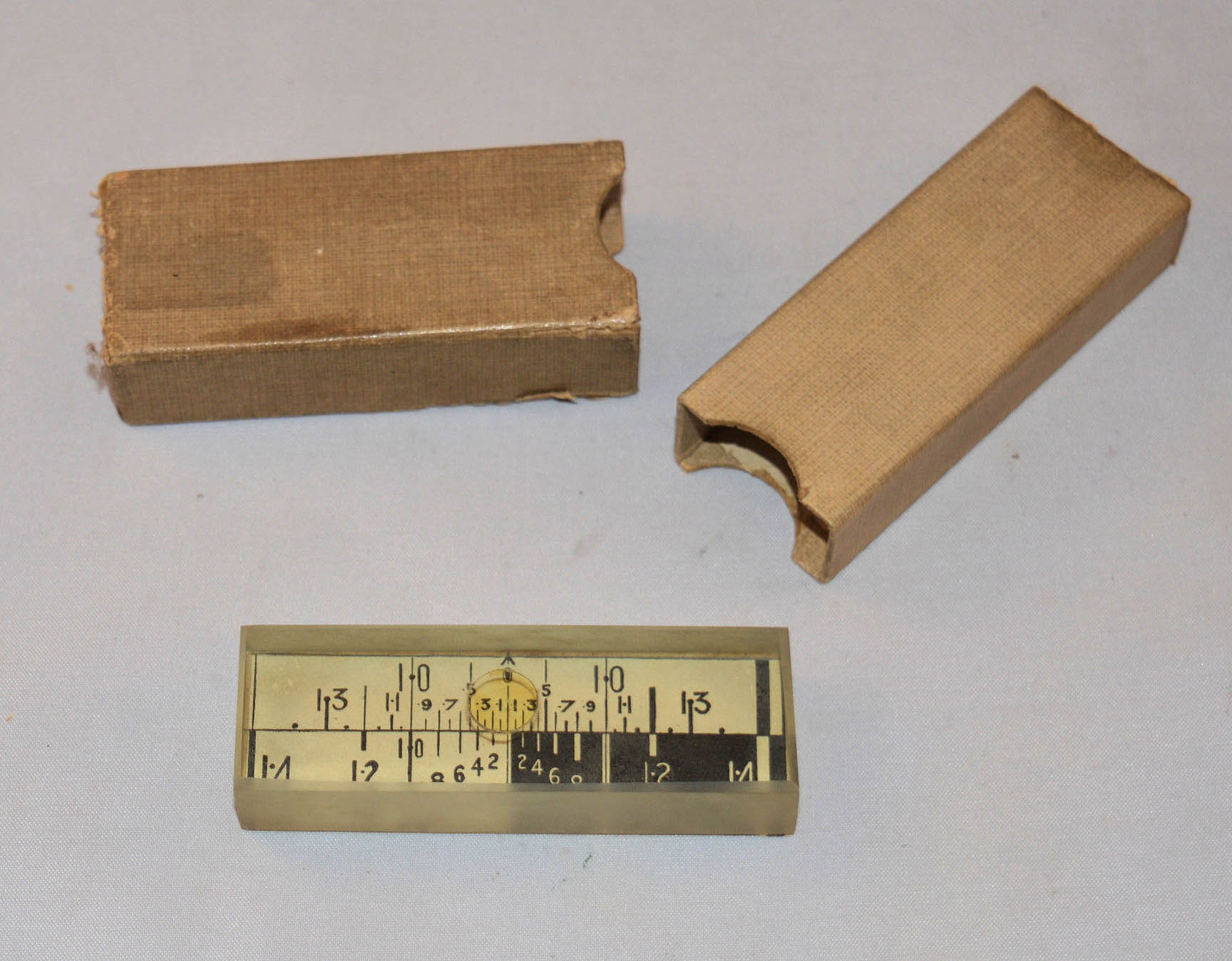
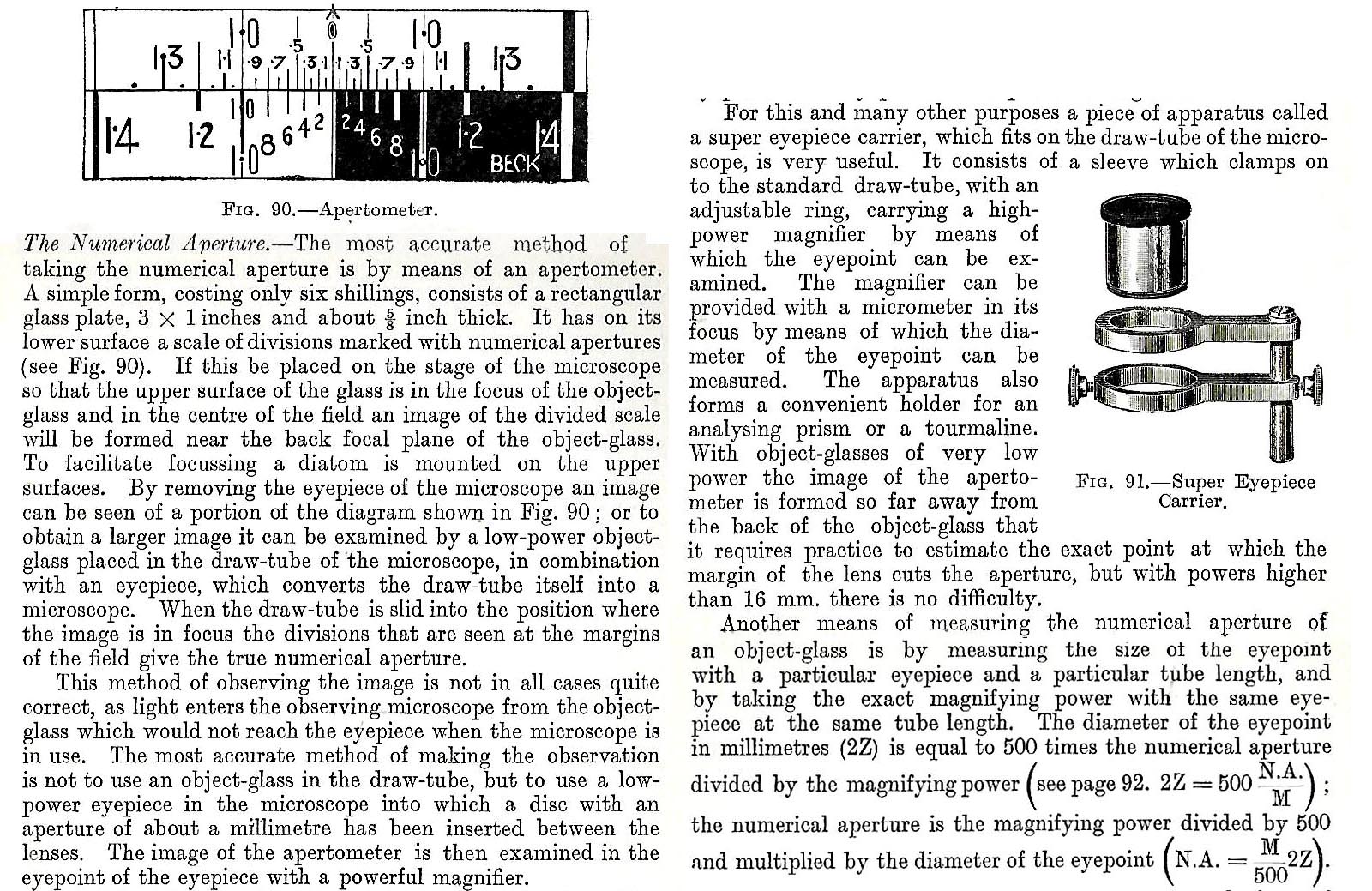
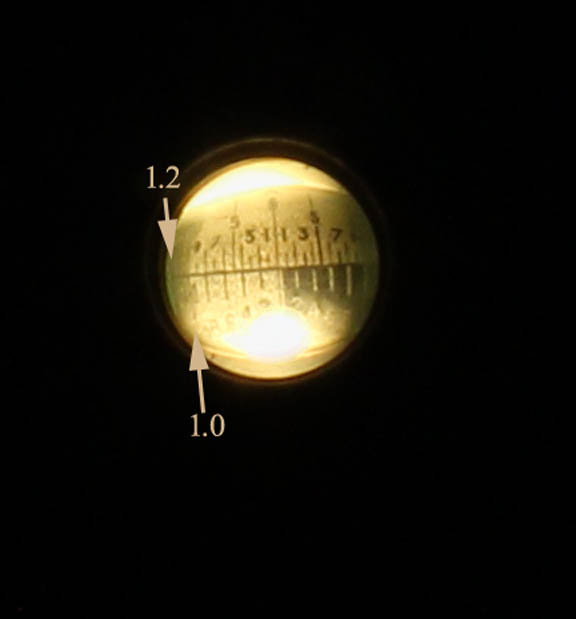 Enlarged Image of Back Focal Plane of 100X oil Immersion objective, labeled as NA of 1.25. Note the difficulty making out the lines above NA of 0.8
Enlarged Image of Back Focal Plane of 100X oil Immersion objective, labeled as NA of 1.25. Note the difficulty making out the lines above NA of 0.8
DESCRIPTION AND USE:
The length and width of the Beck apertometer are similar to a standard slide(about 3 x 1 inches, or 254 x 76.2 mm). It is, however, much thicker than a slide, about 15 mm(9/16 inches) thick. A round cover slip of 10 mm diameter is glued to the center of the top. Although Beck states that a diatom is mounted under this coverslip, mine has only a few specks of debris, possibly parts of sponge spicules. Regardless, these can be used to focus the instrument on the top surface under the coverslip.
The Beck apertometer shown here came in a cardboard slip case, covered in tan cloth, and measuring about 33 x 20 mm in outer dimensions. Glued to the bottom of the device is the scale, printed on paper. The lines are labeled in NA (numerical aperture) units from 0.1 to 1.4 in 0.1 increments, each line labeled. Use of the device is well described above in the excerpt from Conrad Beck's 1924 book. Note that he describes two ways of using it. In one, the image of the back of the objective is viewed via an arrangement that makes the draw tube a microscope. Another, said to be more accurate, uses a special eyepiece with a diaphragm and an external high power magnifier on top of it; this is essentially what is now refered to as a Phase Telescope.
I found that for a low power (10X) objective (second to lowest and lowest images above on the left), one needs only to remove the eyepiece after focusing. You can then view the back focal plane of the objective well enough with the naked eye to view the apertometer lines. As you can see, a modern phase contrast objective labeled with an NA of 0.25 measured almost exactly that using the instrument. For a 40X objective(second to lowest and lowest images above on the right), the same technique can be used, but the numbers are harder to see with the naked eye. As you can see, this 40 X phase contrast objective, rated with an NA of 0.75, measures only slightly less than that, perhaps about 0.72*. The second to lowest images are shown without enlarging and cropping the image. The lowest images are enlarged and cropped to show the detail. Note the phase rings which are visible in the back focal plane of the objectives (as they should be).
As for an oil immersion objective, it becomes more difficult to take a reading, for, as shown above at the bottom of the middle column, the lines and numbers become more and more indistinct at the edge of the field with such high NA objectives. One has to study the view carefully before accepting what might at first appear to be the value. Finally, when I tested this device with a modern oil immersion apochromatic objective, the lines became so indistinct at the edge of the field, that an accurate reading was not possible. In fact it looked about the same as the reading obtained with the lower NA oil objective.
Using a phase telescope to view the back focal plane of the objectives worked about as well as the photographic technique, though for the the 40X objective, there was slight vignetting with the phase telescope, giving a slightly lower NA of about 0.70 instead of the 0.72 seen without it. In summary the Beck Apertometer works well with low to moderate power objectives, but becomes more and more difficult to use as the NA increases, particularly with very high NA objectives. At this time, I must conclude it is unreliable for use with very high NA oil immersion objectives.
*These images were taken with an ordinary SLR with a 50 mm lens, with the microscope eyepiece removed. The camera was supported on a tripod and the front of the camera lens was about an inch above the upper end of the microscope tube. It was viewed on a computer screeen and focused on the back focal plane of the objective using the enlarged 'live view' setting of the camera software.
HISTORY OF THIS INSTRUMENT:
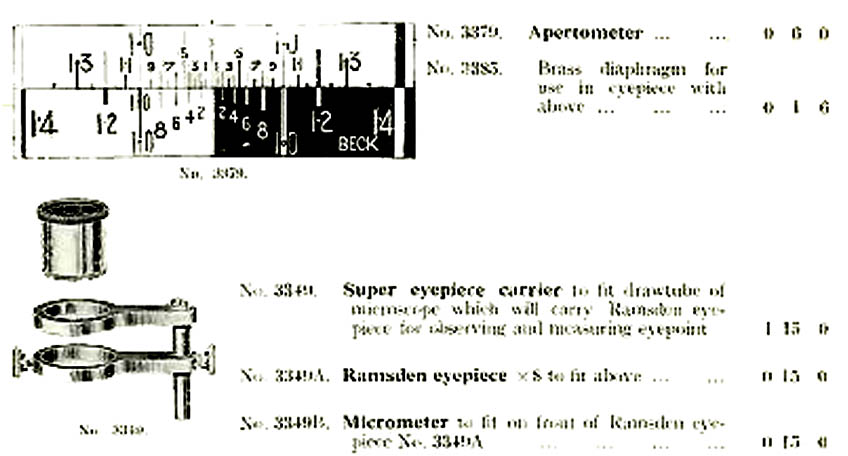 This type of Beck Apertometer was apparently first produced in the early 1920's. It was described by Conrad Beck in his book The Microscope, Part II, An Advanced Handbook in 1924, and again in the 1938 edition, but not in the 1921 edition. I have found only one catalog listing for it, and its associated items, in a catalog, likely from the second quarter of the twentieth century, which is undated. Beck also sold the Cheshire Apertometer, which was said to be a little easier to use when the highest power objectives were being tested. The Cheshire used curved lines which were said to be less distorted at the edge of the field of high power objectives than the straight lines of Beck's apertometer. According to Bracegirdle, the Beck apertometer was still being sold in 1953. Why more of these are not seen today is something of a mystery. My guess is that when they are found, few people know enough to associate them with microscopy. Early on this instrument had a diatom, or apparently as in my case, parts of other calcarious organisms under the coverslip to focus on, but there are also examples with a tiny cross engraved on the top for the same purpose. See section 'F' of the Bracegirdle catalog of the instruments of the Science Museum.
This type of Beck Apertometer was apparently first produced in the early 1920's. It was described by Conrad Beck in his book The Microscope, Part II, An Advanced Handbook in 1924, and again in the 1938 edition, but not in the 1921 edition. I have found only one catalog listing for it, and its associated items, in a catalog, likely from the second quarter of the twentieth century, which is undated. Beck also sold the Cheshire Apertometer, which was said to be a little easier to use when the highest power objectives were being tested. The Cheshire used curved lines which were said to be less distorted at the edge of the field of high power objectives than the straight lines of Beck's apertometer. According to Bracegirdle, the Beck apertometer was still being sold in 1953. Why more of these are not seen today is something of a mystery. My guess is that when they are found, few people know enough to associate them with microscopy. Early on this instrument had a diatom, or apparently as in my case, parts of other calcarious organisms under the coverslip to focus on, but there are also examples with a tiny cross engraved on the top for the same purpose. See section 'F' of the Bracegirdle catalog of the instruments of the Science Museum.
The author is indebted to James Solliday for reviewing the various editions of Beck's books to provide part of the above information.

 Enlarged Image of Back Focal Plane of 100X oil Immersion objective, labeled as NA of 1.25. Note the difficulty making out the lines above NA of 0.8
Enlarged Image of Back Focal Plane of 100X oil Immersion objective, labeled as NA of 1.25. Note the difficulty making out the lines above NA of 0.8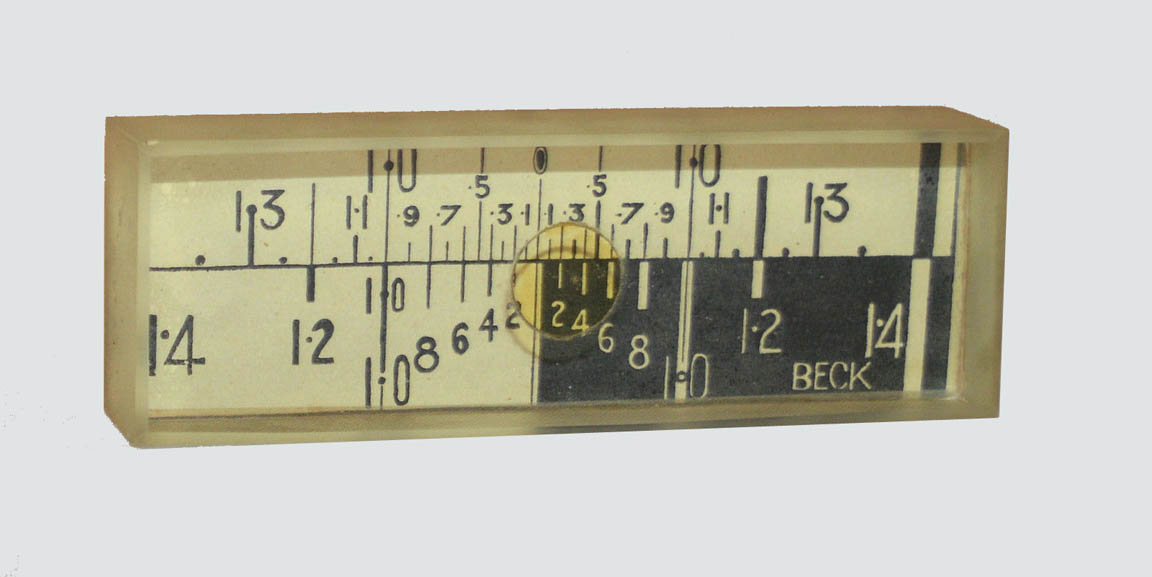
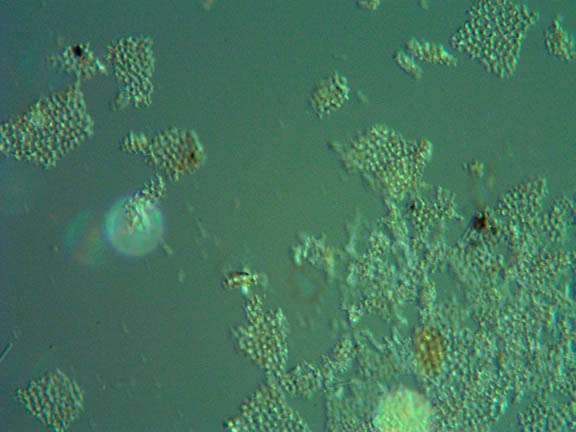 10 X Objective Image of the Debris (parts of sponge spicules?)Under the coverslip.
10 X Objective Image of the Debris (parts of sponge spicules?)Under the coverslip.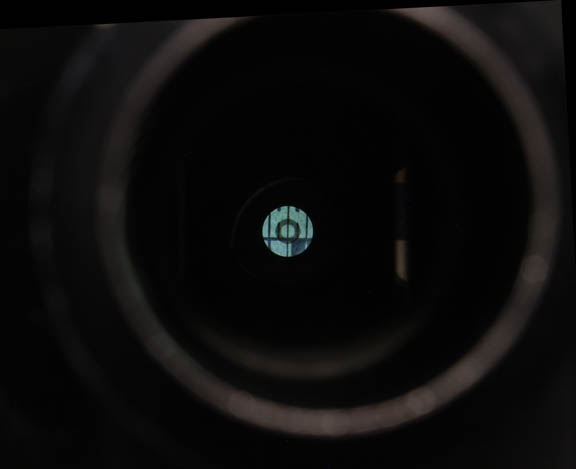 Apertometer image, 10X obj.
Apertometer image, 10X obj.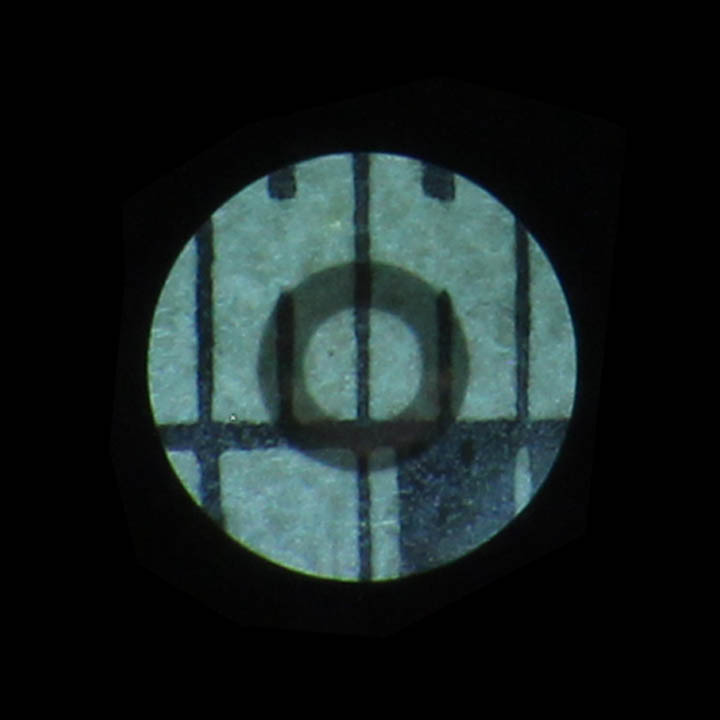 Apertometer Image 10X obj., labeled as NA of 0.25. Enlarged image.
Apertometer Image 10X obj., labeled as NA of 0.25. Enlarged image.
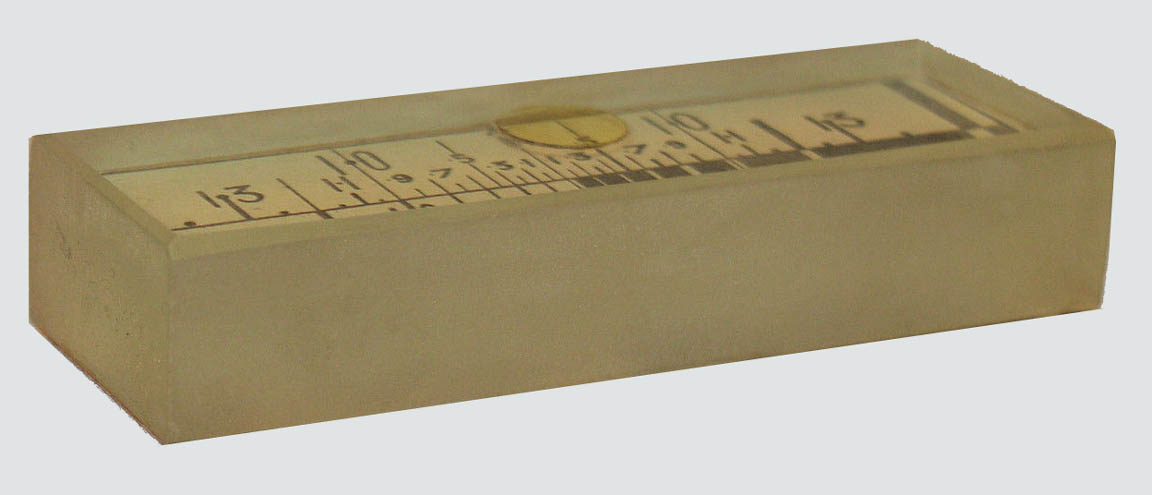
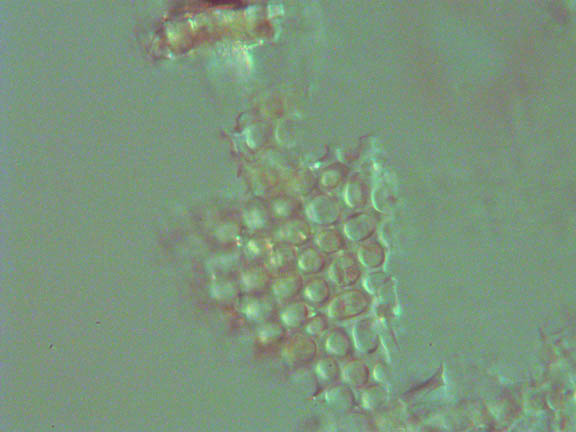 40 X Objective Image of the Debris (parts of sponge spicules?)Under the coverslip.
40 X Objective Image of the Debris (parts of sponge spicules?)Under the coverslip.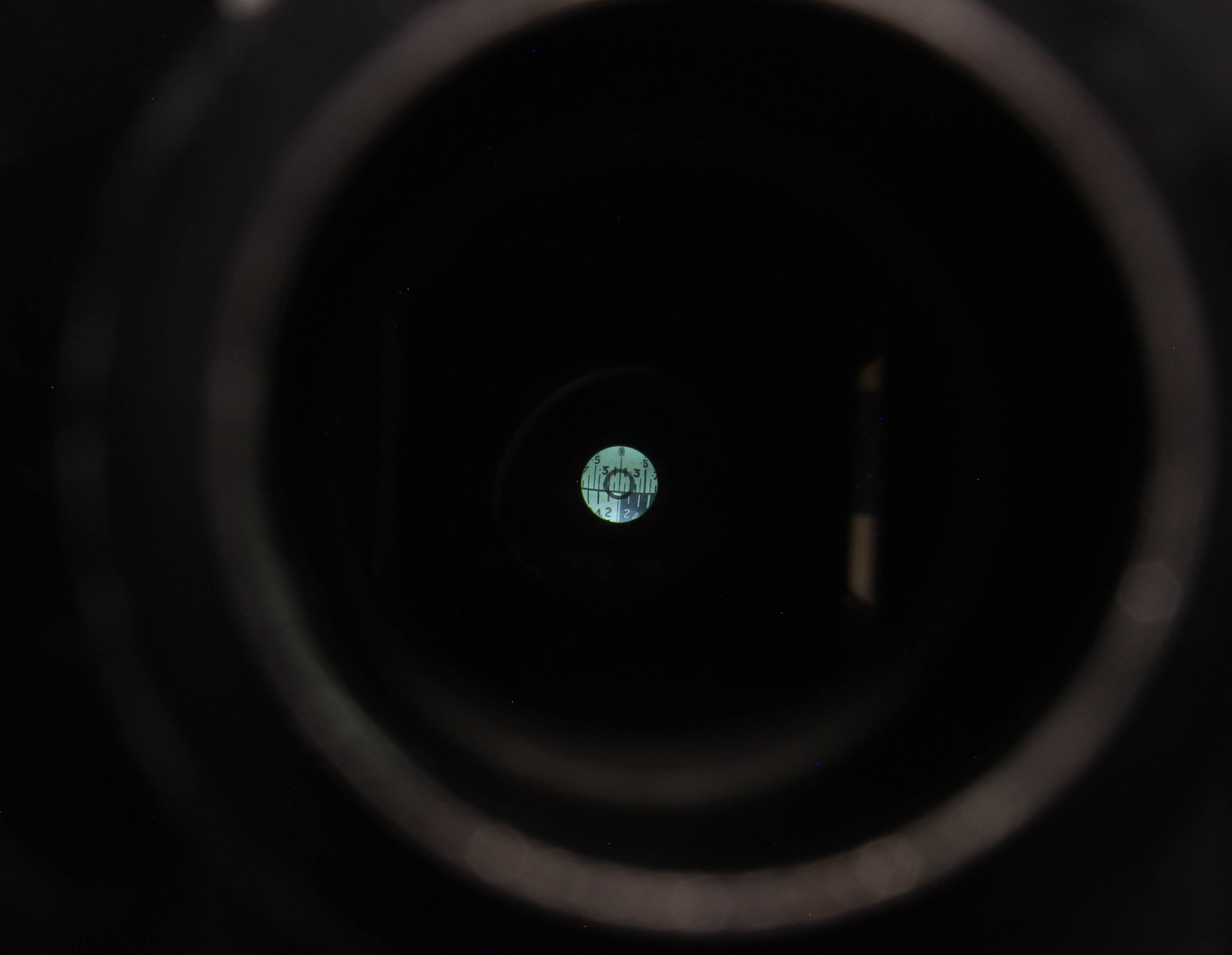 Apertometer Image, 40X obj. Eyepiece removed.
Apertometer Image, 40X obj. Eyepiece removed. 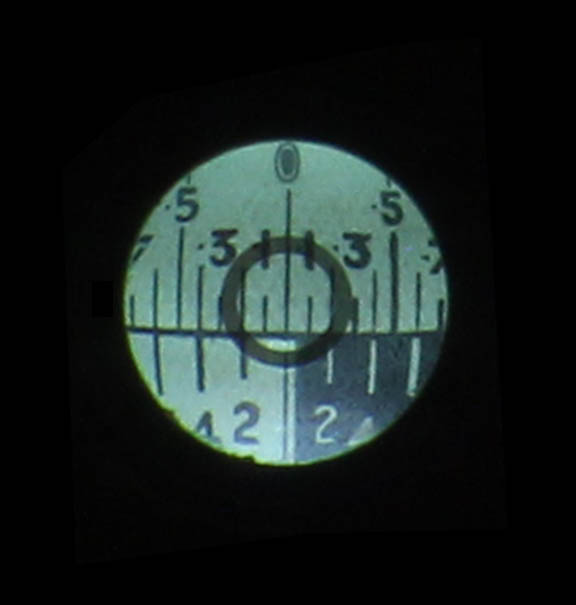 Apertometer Image 40X obj., Labeled as NA of 0.75. Enlarged Image.
Apertometer Image 40X obj., Labeled as NA of 0.75. Enlarged Image. This type of Beck Apertometer was apparently first produced in the early 1920's. It was described by Conrad Beck in his book The Microscope, Part II, An Advanced Handbook in 1924, and again in the 1938 edition, but not in the 1921 edition. I have found only one catalog listing for it, and its associated items, in a catalog, likely from the second quarter of the twentieth century, which is undated. Beck also sold the Cheshire Apertometer, which was said to be a little easier to use when the highest power objectives were being tested. The Cheshire used curved lines which were said to be less distorted at the edge of the field of high power objectives than the straight lines of Beck's apertometer. According to Bracegirdle, the Beck apertometer was still being sold in 1953. Why more of these are not seen today is something of a mystery. My guess is that when they are found, few people know enough to associate them with microscopy. Early on this instrument had a diatom, or apparently as in my case, parts of other calcarious organisms under the coverslip to focus on, but there are also examples with a tiny cross engraved on the top for the same purpose. See section 'F' of the Bracegirdle catalog of the instruments of the Science Museum.
This type of Beck Apertometer was apparently first produced in the early 1920's. It was described by Conrad Beck in his book The Microscope, Part II, An Advanced Handbook in 1924, and again in the 1938 edition, but not in the 1921 edition. I have found only one catalog listing for it, and its associated items, in a catalog, likely from the second quarter of the twentieth century, which is undated. Beck also sold the Cheshire Apertometer, which was said to be a little easier to use when the highest power objectives were being tested. The Cheshire used curved lines which were said to be less distorted at the edge of the field of high power objectives than the straight lines of Beck's apertometer. According to Bracegirdle, the Beck apertometer was still being sold in 1953. Why more of these are not seen today is something of a mystery. My guess is that when they are found, few people know enough to associate them with microscopy. Early on this instrument had a diatom, or apparently as in my case, parts of other calcarious organisms under the coverslip to focus on, but there are also examples with a tiny cross engraved on the top for the same purpose. See section 'F' of the Bracegirdle catalog of the instruments of the Science Museum.